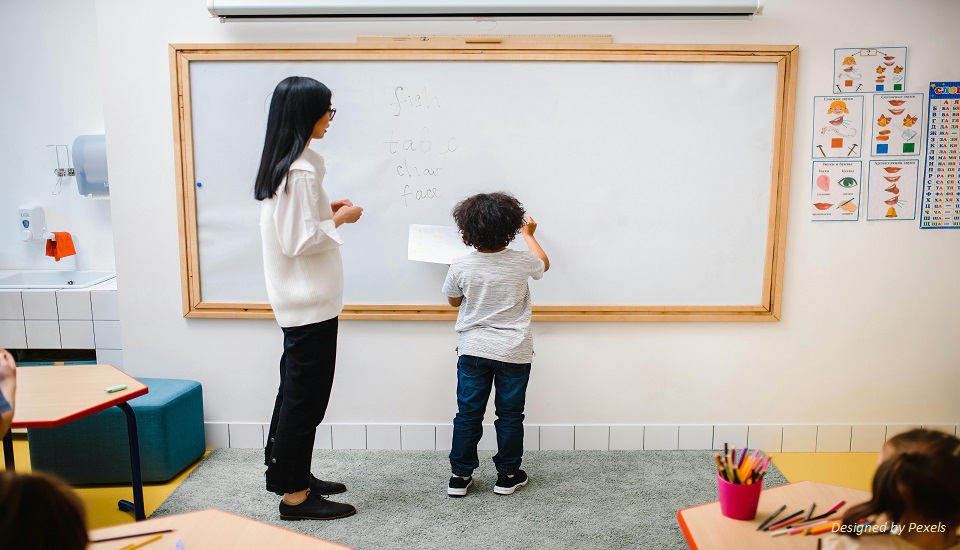Exploring the Benefits of CLIL in Bilingual Classrooms
Content and Language Integrated Learning (CLIL) is rapidly gaining traction as an effective pedagogical practice within bilingual education systems. It is a dual-focused educational approach where students learn a subject through a foreign language, thereby integrating language acquisition with subject learning.
This method not only enhances language skills but also provides cognitive and academic benefits. By immersing students in both content and language, CLIL offers a unique learning experience that prepares students for a more interconnected world.
As educators and policymakers strive to improve educational outcomes, the advantages of adopting CLIL in bilingual classrooms become increasingly evident. Those TEFL educators who have pursued courses like 280 Hours Advanced Diploma, knows it really well.
If you also want to know about CLIL and it’s benefits, then we have got you covered.
In this blog post, we will be exploring the concept of CLIL and the benefits of CLIL in Bilingual education in details.
Before you move to the topic, can we ask you a quick question? Do you follow us on Social Media? If not, then you’re missing out on a lot of informative content. We regularly share upgraded educational content, tips, feedback, and more. Check us out by clicking the profiles here - Facebook / Twitter / LinkedIn / Pinterest / Instagram / YouTube
So, without any further delay, let’s get started.
Understanding CLIL (Content and Language Integrated Learning)
Content and Language Integrated Learning (CLIL) is an educational approach where students learn a subject through the medium of a second language. This approach serves the dual purpose of teaching both the subject matter and the language itself, forming an integrated learning experience. The fundamental principles of CLIL revolve around four main pillars: content, communication, cognition, and culture.
1. Content: CLIL involves teaching subject matter such as science, history, or mathematics in a second language. The focus is on the subject content while enhancing language proficiency.
2. Communication: This principle emphasizes the use of the second language for real-life communication purposes, fostering linguistic competence as students interact and express their thoughts in the target language.
3. Cognition: Cognitive skills are developed as students think critically, solve problems, and understand complex concepts in a foreign language context.
4. Culture: Understanding and appreciating cultural aspects are integral to CLIL, helping students become aware of diverse perspectives and global issues.
By integrating these principles into education, CLIL contributes to an enriching bilingual experience, preparing students for a multicultural and interconnected world.
Benefits of Being Bilingual
Let’s get to know the benefits of being Bilingual in the language learning journey:
Enhanced communication and Interpersonal Skills
Bilingual individuals often exhibit superior communication skills. The ability to switch between two languages effortlessly aids in the development of greater verbal and non-verbal communication abilities. This adaptability extends to understanding nuances and context more effectively, facilitating better interpersonal relations and cross-cultural interactions.
Developing Listening and Speaking Skills
Mastering two languages requires acute listening and proficient speaking skills. Bilingual education promotes these abilities as students must discern and reproduce sounds from both languages. This exposure enhances their capacity to pick up subtle auditory cues, improving overall listening comprehension and articulate speech.
Improved Cognitive Function
Research indicates that bilingualism positively influences cognitive abilities. Students involved in bilingual education, such as CLIL, exhibit improved problem-solving and critical-thinking skills. The constant juggling between two linguistic frameworks fosters an agile mind capable of processing information efficiently.
Improved Executive Functions
Executive functions, which include tasks like planning, attention, and multitasking, are notably stronger in bilingual individuals. The need to manage two languages stimulates these brain functions, resulting in better task-switching abilities and enhanced concentration levels.
Positive Changes To The Brain
Engaging in bilingual education can lead to structural changes in the brain. Studies have identified increased Gray-matter density and improved white matter integrity in the brains of bilinguals. These physical changes are associated with better memory, attention, and overall brain health.
Enhanced Neural Connectivity
Being bilingual enhances neural connectivity, thus improving the communication between different brain regions. This aspect is beneficial for holistic brain function, allowing for quicker cognitive processing and more efficient retrieval of information. Consequently, individuals experience improvements in both learning capacity and mental flexibility.
Learn, how ESL teachers use linguistics to teach English, here:
Benefits of the CLIL Methodology
Let’s get to know the benefits of being CLIL teaching methodology:
Gain Proper Understanding of a Particular Language
Content and Language Integrated Learning (CLIL) offers students the opportunity to achieve a profound understanding of the language being taught. By providing a rich and authentic context for language use, students are exposed to vocabulary and structures as they naturally occur within the subject matter. This immersive approach enhances linguistic competence, as learners are required to process and produce the target language consistently.
Mastery On a Subject
CLIL enables students to acquire expertise in a subject area while simultaneously learning a language. This dual focus not only supports language acquisition but also ensures that students gain a solid understanding of the curriculum content. Students engage with complex materials and resources, which leads to greater retention and application of subject knowledge.
Fostering Critical Thinking and Problem-Solving Abilities
The CLIL methodology encourages students to think critically and solve problems as they navigate subjects through a new linguistic medium. Such activities require analytical skills, challenging students to question assumptions and develop reasoned arguments. This approach to learning not only stimulates cognitive development but also prepares students for real-world scenarios where these skills are invaluable.
Enhanced Engagement and Motivation
By integrating content with language learning, CLIL fosters heightened student engagement. Lessons become more meaningful as students recognize the applicability of what they are learning, both linguistically and cognitively. This relevance boosts motivation, as learners are more invested in the outcomes of their education.
Enhance Brain Flexibility
Studies suggest that bilingual education, such as what is experienced through CLIL, enhances brain flexibility and cognitive function. Engaging with multiple languages and subjects in tandem strengthens neural pathways, leading to improved memory, multitasking ability, and mental agility.
Improve Academic Achievement
The comprehensive skill set acquired through CLIL sets the stage for long-term academic success. Students develop a broader worldview, effective communication skills, and the ability to engage with complex concepts. These advantages translate into higher academic performance and greater opportunities for advancement in future educational and professional endeavours.
CLIL’s Impact on Student Engagement
Let’s get to know the positive impact of CLIL on student’s engagement:
Increased Motivation and Interest in Classroom Activities
The intrinsic connection between language and content made through CLIL naturally heightens student enthusiasm. As lessons directly correspond to real-world applications, students become more curious and interested in the material. This increased motivation prompts active participation, resulting in a more dynamic and interactive classroom environment.
Promoting Collaborative Learning Environments
CLIL fosters a culture of collaboration, encouraging students to work together in diverse language and content settings. Group activities and projects necessitate communication and cooperation, allowing students to develop interpersonal skills and learn from each other's perspectives. This teamwork cultivates a supportive learning atmosphere, where all participants benefit from shared experiences and insights.
Empowering Students with Autonomy in Learning
The CLIL approach empowers students by encouraging them to take an active role in their learning journey. With increased exposure to content-specific vocabulary and themes, students gain the confidence to explore topics independently. This autonomy fosters a sense of ownership and responsibility, motivating learners to set personal goals and commit to their achievement.
Benefits of CLIL For Teachers and Schools
Let’s get to know the benefits of CLIL for teachers and schools:
Content and Language Integrated Learning (CLIL) serves as a transformative approach in bilingual education by blending linguistic development with subject knowledge. To fully harness its advantages, teachers and schools can adopt several strategies:
1. Collaborative Planning: Effective implementation begins with collaboration. Teachers of different subjects, such as geography or science, can work closely with language teachers to design integrated lessons. This teamwork ensures that content and language objectives are harmoniously interwoven, maximizing the educational impact.
2. Professional Development: To skilfully facilitate CLIL, educators need appropriate training. Schools can organize workshops or seminars that focus on CLIL methodologies. Through continuous professional development, teachers can remain updated on best practices and innovative approaches that enhance both content delivery and language acquisition.
3. Resource Utilization: Schools should invest in resources that support CLIL, such as bilingual textbooks or digital tools that align with curriculum objectives. Utilizing multimedia resources enables a dynamic learning environment, engaging students through various modes of content delivery.
4. Student-Cantered Activities: Encourage active participation by designing activities that require students to use the target language as they explore subject content. Group projects, presentations, and discussions prompt learners to apply language skills in context, reinforcing their understanding and proficiency.
Final Thoughts
Content and Language Integrated Learning (CLIL) offers numerous benefits when incorporated into bilingual education frameworks. By fostering an immersive learning environment, CLIL enables students to simultaneously acquire language proficiency and subject knowledge. It enhances cognitive skills through critical thinking and problem-solving activities.
Moreover, CLIL promotes cultural awareness and global citizenship, equipping students with the tools necessary for success in a multilingual world. Teachers, students, and educational institutions all benefit from CLIL’s comprehensive and innovative approach.
If you want to learn more interesting and effective strategies to make your language learners life easier. Then, consider pursuing courses like 280 Hours Advanced Diploma, where you will get to learn from top expert trainers.
We believe education should be accessible for everyone. That’s why we don’t charge for our blogs. Find the right course that will help you in your career with us, contact us at - 1800–212–6400. You can mail us at act@asiancollegeofteachers.com




